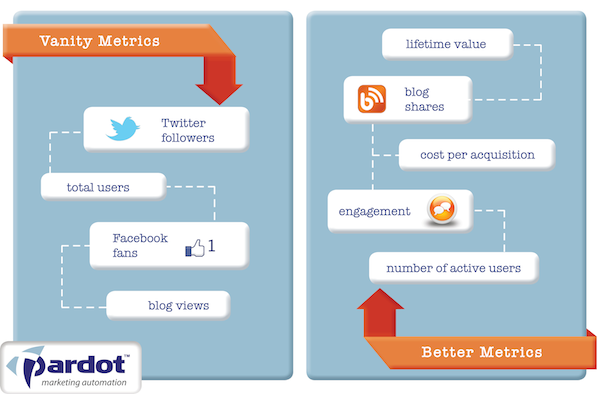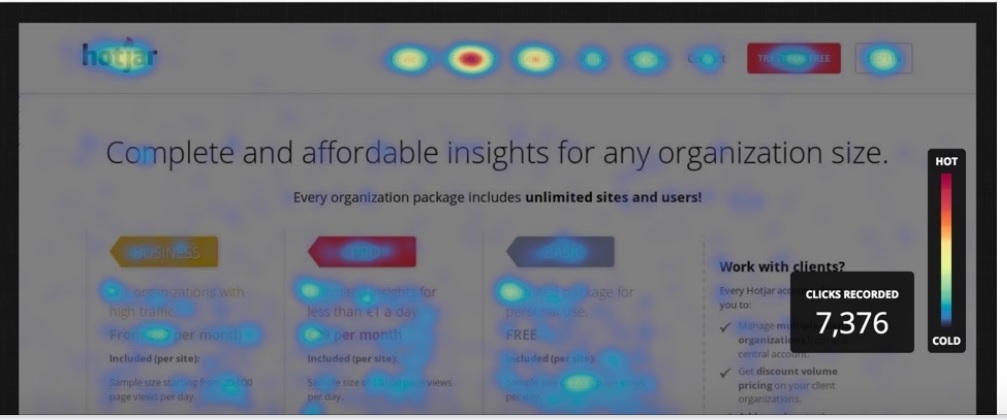6 Tips to Improve ROI through Better Marketing Reporting

Data is all around us. Big data, small data, micro moments, Instagram stories, analytics and more. There are thousands of tools that promise to give us insights into our campaigns and help us plan better next time. And, of course, get better results.
It’s no wonder that most marketers say they are suffocating in data.
Here’s another catch: with all these numbers at their disposal, some marketers seem to have forgotten to be human. Of course, I would never argue that you should base your campaigns on gut feeling or common sense instead of data. Just that you sometimes need to remember that behind all the numbers you analyze and crunch lie actual human beings.
Your clients.
Your leads.
Your followers.
Humanizing them with accurate buyer personas is a great start. But it’s not enough. Marketing reporting plays an essential part in getting more out of your campaigns.
So how can you look beyond numbers in marketing reporting? How can you get truly useful insights that help you plan campaigns for humans, not Google bots?
Let’s see.
6 Tips to Transform Your Marketing Reporting into an Well Oiled Cash Machine
Reporting and justifying expenses has always been a sensitive point for marketers. More than 50% don’t know if their content strategy, for instance, is effective.
Herein lies the actual issue: defining what is effective and then tweaking your campaigns to boost efficiency.
Here are 6 ways to do it:
-
Include Reporting in Your Strategy
The best way to make the most of marketing reporting is to consider it from the very beginning. When you create your marketing strategy, include the reporting tools you will be using and what exactly you will be measuring.
Ideally, you should include this along with your goals. For example:
Yearly objective: get 150 qualified leads through social media
Measurement: Google Analytics tracker or CRM software (like HubSpot)
This way, when the reporting time comes, half your work will be done. All you will have to do is compare the objectives you set with the data you pull from your tool of choice.
Even more, adding this to your marketing plan will do wonders for accountability. Showing that you plan to track and measure your efforts will make C-level execs more inclined to sign off on your plan.
-
Stay Away from Vanity Metrics
Oh, boy, this is a hard one!
I must admit that I, too, check my Twitter follower count almost daily.
But I do know that it means nothing, so I also make a point to track inquiries or leads that come via Twitter.
If you’re unclear about what vanity metrics mean, ask yourself this:
How does this measurement help me boost my company’s ROI?
Twitter followers, Facebook fans, website traffic, even post shares and likes – none of these bring actual money. You know, the kind that pays bills.
Here’s a great example of vanity metrics versus “better” metrics from Pardot:
 Image via Pardot
Image via Pardot
Of course, shares, fans, followers and traffic are great to have. No lead can come without them first. But focusing on tracking these metrics instead of what really matters can turn out to be quite problematic in the long run.
They are called “vanity metrics” because they make us feel good about our marketing efforts. We invested $1000 in Facebook ads this month and got 1200 likes for it. That’s a great ratio. But what does it really do for our business? How many of those 1200 new fans turned into customers?
The real problem with vanity metrics is that they turn our attention away from what matters: ROI. This is one of the core problems of using so much data in your marketing reporting. The numbers look great, but do they really translate into cold, hard cash?
-
Use Data to Empower Sales
If you were an ad executive in the 50s, you would have dealt with a lot of guess work. And plenty of glam surrounding your job, but that’s a whole other discussion.
Think about it: you create a great TV spot. It tests well in your focus group of 20 people. You buy TV space. The sales for your client’s product grow. Conclusion: the ad worked.
But is correlation always causation?
If Don Draper could assign the sales boost at Heinz to its great TV and newspaper ads, we don’t have that luxury anymore. We need to rely on figures.
Unfortunately, very few marketers go more in-depth than Don Draper would. And I’m not just talking about vanity metrics here.
Tools like HotJar tell us what works and what doesn’t on our website. Of course, this is great! It could cut the A/B testing time in half.
Image via HotJar
It could also help us conclude that, since our latest website upgrade, 20% more people clicked on pricing aka 20% more people were actually interested in buying.
But the question remains: how many of those people actually bought something?
I recently stumbled upon a case study that showed the true power of big data and correct marketing reporting. The case study shows how marketing analytics can be used on large data sets to provide key business insights. A good interpretation of data can generate valuable information like: when to call a certain customer, which sales rep should do it and what is the best product to pitch to them.
Now this is useful marketing reporting!
-
Check Your Marketing Reports Weekly
I know this may sound like overdoing it, but bear with me for a second.
First and foremost, focusing on marketing reporting every week is a great week to keep yourself accountable. A good strategy has value only as long as you stick to it. And, trust me, in the era of FOMO (Fear Of Missing Out), it’s quite easy for marketers to get distracted from their end goal.
A shiny new social network, a new analytics toy or a new social media management and marketing tool can be quite tempting. Before you know it, you’ll forget about your ROI-oriented goals and spend days testing the new toys all your peers are talking about.
But checking your marketing reports every week is a great way to get yourself back on track. Plus, it can be really helpful with tweaking certain campaigns as you go.
For example, you can’t simply set up a month-long Facebook campaign and forget about it. What if you reach the end of your timeframe and your budget and only then you realize that all the leads said campaign brought in are wrong?
That would be wasted money, wouldn’t it?
Checking in on your marketing reporting weekly, on the other hand, can help you fine tune your targeting or your message until you get everything right.
-
Experiment as Often as Possible
A/B testing is a must for every digital marketer. No matter the amount of data you gather in your marketing reporting, you can still get it wrong sometimes.
So you need to test. Facebook campaigns, AdWords campaigns, landing pages, registration pages. Briefly put: each of your tactics needs to be thoroughly tested in order to get to the winning combination.
-
Don’t Be Afraid to Make Decisions on Your Own
Remember what I said about marketers losing their human touch?
Well, it’s happening and it’s a damn shame.
Marketing accountability comes with its very own paradox: we’re so afraid of making mistakes that we can’t seem to make decisions that aren’t based on data. The more data to support it, the better.
And you can’t really blame marketers for it. After all, data-backed campaigns look better in any marketing plan. When it comes to marketing reporting, failures can also be assigned to bad data, just like success can be assigned to having the right data.
However, a study by Princeton and Stanford Universities showed that too much data could paralyze our decision-making abilities. Instead of making the decision now, we choose to wait for one more report or one more analyst to conclude their work.
And this is how great opportunities are missed.
Furthermore, there is something to be said about emotion-based decisions.
 Image via Chief Marketer
Image via Chief Marketer
It looks like we can still make decisions without a data center crunching billions of numbers for us. And that they might be the right decisions to make.
Again, I’m not saying you should forego all data in your marketing reporting and strategy. Just that, as always, moderation is crucial.
Key Takeaway
Marketing reporting can be your best friend when it comes to creating valuable campaigns that yield real, tangible results. But only as long as your marketing reporting is done right.
Steer clear of vanity metrics and make sure that you don’t drown in too much data. Test every reporting tool you can think of, but, in the end, make sure you use your own expertise and knowledge as well.
Need help creating a marketing strategy that’s focused on ROI and boosting your revenue instead of meaningless vanity metrics? We’ve got you covered! Fill in the form below and we’ll take it from there:


